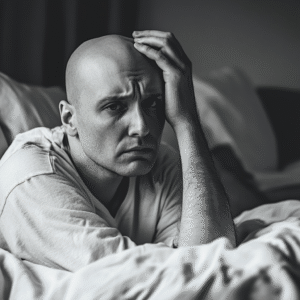How Early Detection Transforms Outcomes and Why Everyone Should Know Their Screening Options
Cancer doesn’t always announce itself with obvious symptoms. In many cases, it develops silently — growing, evolving, and advancing until it becomes harder to treat. But what if we could catch it earlier? What if we could detect cancer or precancerous changes before the first symptom ever appeared?
This is precisely what cancer screening — or oncological screening — is designed to do. It’s a proactive approach to health that saves lives by finding disease in its earliest, most treatable stages.
What Is Cancer Screening?
Cancer screening is the process of testing healthy, symptom-free individuals for signs of cancer or precancerous changes. These are not diagnostic tests — they do not confirm a disease — but they help identify who might need further investigation.
It’s a cornerstone of modern preventive medicine. The goal is not just to find cancer, but to find it early, when survival rates are significantly higher, treatment is less aggressive, and recovery is more likely.
Five Key Reasons Why Cancer Screening Is Essential
1. Early Detection Saves Lives
The earlier cancer is detected, the better the chances of successful treatment. Many cancers that are deadly in late stages — such as cervical, breast, or colon cancer — are highly curable when caught early. Screening can detect tumors before they spread or even before they turn cancerous.
2. Improves Long-Term Survival
Cancers diagnosed through screening programs often have a more favorable prognosis. Early-stage treatment is more effective, less invasive, and often associated with fewer long-term side effects. Screening doesn’t just save lives — it also improves quality of life after treatment.
3. Reduces the Burden of Disease
Screening can detect precancerous lesions or conditions that, if left untreated, would eventually lead to cancer. By removing or treating these abnormalities early, we can prevent cancer altogether — reducing the overall incidence and burden on healthcare systems.
4. Cost-Effective in the Long Run
Although screening programs require upfront investment, they often reduce the need for expensive late-stage treatments, prolonged hospital stays, and palliative care. Early treatment tends to be faster, simpler, and more affordable — making screening not only medically wise, but economically sound.
5. Public Health Impact
Widespread screening helps reduce population-wide cancer mortality. When large segments of society participate in screening programs, more cancers are caught early, fewer people die, and communities experience less suffering. This makes screening a public health priority with long-term social benefits.
Common Types of Cancer Screening and Who Should Consider Them
Each type of cancer has its own screening guidelines based on risk factors such as age, sex, family history, and lifestyle. Here are some of the most common types of screening:
Breast Cancer (Women)
- Test: Mammography
- Recommended For: Women aged 40 and older, typically every 1–2 years, depending on guidelines and personal risk.
- Goal: To detect tumors before they are palpable or spread to lymph nodes.
Cervical Cancer (Women)
- Test: Pap smear (cytology test), with or without HPV testing.
- Recommended For: Women starting at age 21, repeated every 3–5 years depending on the type of test used.
- Goal: To identify pre-cancerous changes in cervical cells.
Colorectal Cancer (Men and Women)
- Test: Colonoscopy, stool tests, or sigmoidoscopy.
- Recommended For: Adults starting at age 45–50, with frequency based on the test type and findings.
- Goal: To detect polyps or early-stage cancer in the colon or rectum.
Prostate Cancer (Men)
- Test: PSA (Prostate-Specific Antigen) blood test, digital rectal exam (DRE).
- Recommended For: Men over 50, or earlier if there’s a family history or increased risk.
- Goal: To detect cancer early in men at risk, though shared decision-making is advised due to some risks of overdiagnosis.
Understanding the Limitations of Screening
Cancer screening is powerful, but not perfect. It is crucial to recognize that:
- False positives can occur — indicating cancer when none is present, leading to anxiety and additional tests.
- False negatives are possible — missing a cancer that is present, which may delay diagnosis.
- Not all cancers have effective screening tests (e.g., pancreatic cancer currently lacks routine screening options).
- Screening is not treatment — it is the first step in a longer journey, not the end.
This is why medical guidance is essential. Screening decisions should be personalized, taking into account your individual risk factors, medical history, and preferences.
Cancer Screening Is Not One-Size-Fits-All
Every person is unique. Your gender, age, family history, and lifestyle habits all shape your risk profile. That’s why cancer screening should always be discussed with a qualified healthcare provider.
Don’t simply follow generic recommendations — build a screening strategy tailored to you.
Empowering Your Future Through Prevention
In today’s world, where cancer remains a leading cause of death, screening is more than a medical protocol — it’s a form of empowerment. It gives you information. It gives you time. And most importantly, it gives you choice.
Choosing to undergo regular screening is choosing to take control of your health before disease takes control of your life.


